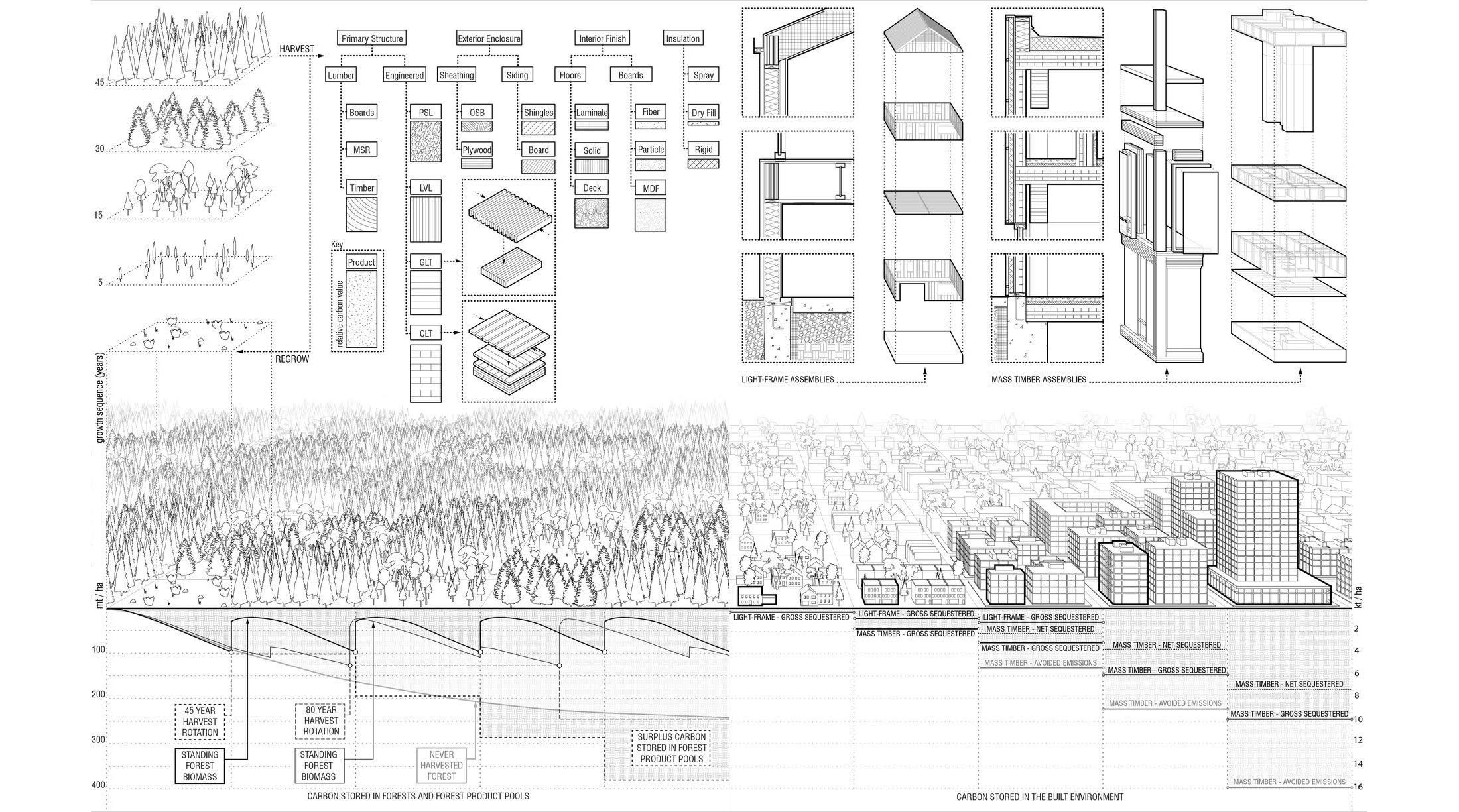Alan Organschi: Building a global carbon sink
Large-scale engineered wood products present the possibility of turning dense urban aggregations of buildings and infrastructure into a new human-made carbon sink.
November 26, 2019
7:00 p.m.
The climate emergency demands that the ways we build, and think about building, change radically. But how? We are in a rapidly evolving, paradoxical context of worsening scientific indicators, sweeping and contradictory policy proposals from different points on the political spectrum, and, simultaneously, increasing climate change-instigated action at the scale of cities and regions.
What, then, should designers do, and how can they do it? How do the practice, culture, and pedagogy of architecture and landscape architecture need to shift?
In this series of lectures and discussions, leading practitioners and educators describe the urgent need for change and sketch the outlines of new ways of thinking and acting as architects and landscape architects. On each evening, respondents will draw out the implications of the ideas presented and offer suggestions for implementing them at a speed and scale commensurate with the climate emergency.
Carbon flows through terrestrial space, matter, and time along myriad pathways—biological, chemical, geological—insinuating its particular chemistries into every process we undertake as builders. It accretes over geological epochs deep in lithospheric strata and, at notably faster rates, accumulates across continental forests. These deposits of global carbon form the ore and the fiber of building construction. The building sector has been estimated recently to account for well over half of the world’s extraction and consumption of carbon-based material and hydrocarbon energy. As world population growth accelerates, and as those burgeoning populations continue to urbanize, the building sector’s demand for raw material and energy for new construction will only grow.
Organschi will discuss an alternative approach to meeting this demand: the broad substitution of emerging mass timber and bio-based building assemblies in the construction of new cityscapes. This potentially massive transfer of large-scale engineered wood products from sustainably managed forests into dense urban aggregations of buildings and infrastructure would form a new human-made carbon sink, turning the future city from a significant source of carbon emissions into a carbon storage system functioning in healthy synergy with global forests.
Alan Organschi is a principal at Gray Organschi Architecture, an architectural practice in New Haven, Connecticut, recognized internationally for its integration of design, construction, and environmental research. He is also the founder of the fabrication workshop and construction management firm JIG Design. As a member of the senior design and technology faculty at the Yale School of Architecture, Mr. Organschi directs the newly inaugurated Yale Building Project LAB. His Timber City initiative examines the application of emerging structural wood fiber technologies and carbon sequestration strategies in the construction of global cities. He is a coauthor of the upcoming book The Carbon Guidebook: A Field Manual For Building Designers and the website decarbonizedesign.com.
Explore
Lever Architecture lecture
The Portland, Oregon, firm is known for its ambitious use of cross-laminated timber.
Kevin Bone on land as a complex system
Kevin Bone, Director of The Cooper Union Institute for Sustainable Design, brings to light just how recently the impact of carbon dioxide emissions has entered into our conversation on the environment as part of The Five Thousand Pound Life: Land conference.
Rebecca Solnit on land, climate, and culture
In the closing session of The Five Thousand Pound Life: Land, activist and writer Rebecca Solnit discusses American identity formation, land and settlement patterns, and climate change with Cassim Shepard.

